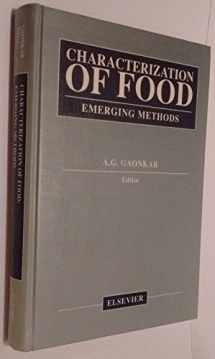
Characterization of Food: Emerging Methods
ISBN-13:
9780444814999
ISBN-10:
044481499X
Edition:
1
Author:
A.G. Gaonkar
Publication date:
1995
Publisher:
Elsevier Science
Format:
Hardcover
450 pages
FREE US shipping
Book details
ISBN-13:
9780444814999
ISBN-10:
044481499X
Edition:
1
Author:
A.G. Gaonkar
Publication date:
1995
Publisher:
Elsevier Science
Format:
Hardcover
450 pages
Summary
Characterization of Food: Emerging Methods (ISBN-13: 9780444814999 and ISBN-10: 044481499X), written by authors
A.G. Gaonkar, was published by Elsevier Science in 1995.
With an overall rating of 3.6 stars, it's a notable title among other
books. You can easily purchase or rent Characterization of Food: Emerging Methods (Hardcover) from BooksRun,
along with many other new and used
books
and textbooks.
And, if you're looking to sell your copy, our current buyback offer is $0.56.
Description
Rapid and continued developments in electronics, optics, computing, instrumentation, spectroscopy, and other branches of science and technology resulted in considerable improvements in various methodologies. Due to this revolution in methodology, it is now possible to solve problems which were previously considered difficult to solve. These new methods have led to a better characterization and understanding of foods.The aim of this book is to assemble, for handy reference, various emerging, state-of-the-art methodologies used for characterizing foods. Although the emphasis is on real foods, model food systems are also considered. Methods pertaining to interfaces (food emulsions, foams, and dispersions), fluorescence, ultrasonics, nuclear magnetic resonance, electron spin resonance, Fourier-transform infrared and near infrared spectroscopy, small-angle neutron scattering, dielectrics, microscopy, rheology, sensors, antibodies, flavor and aroma analysis are included.This book is an indispensable reference source for scientists, engineers, and technologists in industries, universities, and government laboratories who are involved in food research and/or development, and also for faculty, advanced undergraduate, graduate and postgraduate students from Food Science, Food Engineering, and Biochemistry departments. In addition, it will serve as a valuable reference for analytical chemists and surface and colloid scientists.


We would LOVE it if you could help us and other readers by reviewing the book
Book review

Congratulations! We have received your book review.
{user}
{createdAt}
by {truncated_author}


